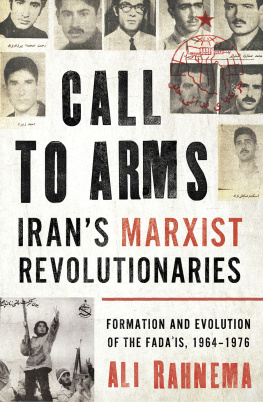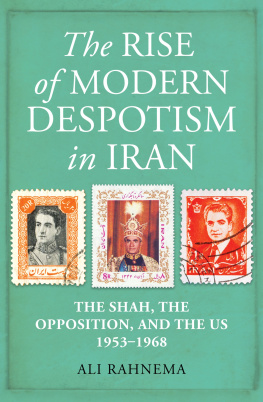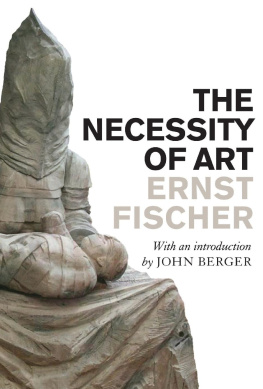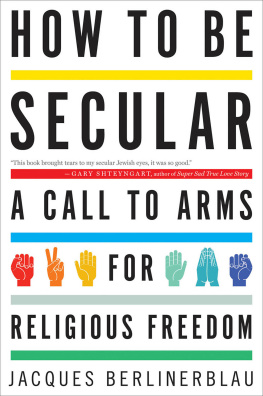Praise for
Call to Arms
Irans Marxist Revolutionaries
Rahnema has done the staggeringly difficult task of offering us a meticulously researched history of the life and times of the Fada is in late-Pahlavi Iran.
Roham Alvandi , Associate Professor of International History, London School of Economics and Political Science
Bypassing existing studies, Ali Rahnemas Call to Arms reconstructs the formation and peak activities of Irans Fada i guerrillas, relying almost entirely on the movements own literature and other contemporary primary sources. Meticulous and riveting, this book works like a time-tunnel, taking us back to experience first-hand the dramatic heroics and painful tragedy of radical political opposition in 1960s1970s Iran.
Afshin Matin-Asgari , Professor of History, California State University, Los Angeles, and author of Both Eastern and Western: An Intellectual History of Iranian Modernity
Ali Rahnemas Call to Arms delivers like a ray of hope, translating foregone pieties of a revolutionary age into the determined course of thinking, doing, and being. This book is an act of redemption, not just of the Iranian Marxist revolutionaries but also of the spirit of the age that demanded armed uprising against tyranny. What Rahnema achieves is a microcosm of a revolutionary age at work far beyond Iranian borders from Asia to Africa to Latin America that precisely in its noble political failures succeeded in building a notion of national sovereignty that forever dismantled any and all claims to state legitimacy. Nations were formed and national consciousness forged by the failed phantom of liberty these revolutionaries imagined and enacted. Read this book with a measure of due reverence. You are in the presence of ennobling legends.
Hamid Dabashi , Hagop Kevorkian Professor of Iranian Studies and Comparative Literature, Columbia University
To the memory of Hamid Habibi, a radical intellectual of the left and a gentleman farmer who had agreed to read this manuscript first.
Contents
Preface and Acknowledgements
Iranian contemporary history is full of unexplored and half-hidden episodes and periods on which Iranians are divided. The social impact and significance of these periods are often manifested in heated debates, exchanges, and ultimately judgements passed many years or decades later. If after half a century Iranians continue to talk about and debate the merits and shortcomings of Siyahkal and the subsequent actions of the Fada i guerrillas, it simply means that the period has marked the social psyche of generations. Charting the proper topography of such periods is an ongoing process. It requires the continuous effort of historians looking at such events with their respective sensitivities and outlooks, and the research material available to them. In the preliminary stages of such historiography the terrain can only be partially illuminated. The final cartography will be produced in time as more investigations are carried out and more light is shed.
The history of the Iranian Marxist revolutionaries, the Fada is, is the subject of this study whence they came, what they sought, and how they fared. The emphasis is on the formative years of those political groups, which turned to armed struggle as their method of fostering change. It traces the origins, evolution, interaction, and process by which two groups merged to form the Peoples Fada i Guerrillas in early 1971 and examines the activities of the Fada is until the summer of 1976. The chronology for this book turned out to be lengthy. The details of team formations, members, activities, armed operations, street battles, arrests, and executions are included in the chronology. I would recommend reading it before starting with the text as it provides a general impression of the context and events.
Understanding the history and impact of the Fada is necessitates answering numerous questions. What was their genealogy and lineage? What was their theoretical and ideological genesis? How did pre-Fada i circles and groups take shape, blend, and develop? What did their theoreticians think? How was the Siyahkal strike planned, carried out, and what were its outcomes? To what extent did the pre-Fada i groups transcend or retain their original identity as they morphed into the Peoples Fada














